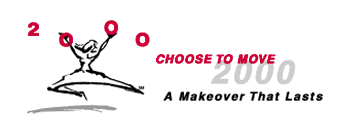







|
 |

 At a Heart disease in women Center kick-off in Dallas, Texas, the American Heart Association interviewed volunteers Rose Marie Robertson, M.D., professor of medicine and vice chair for academic affairs in the department of medicine at Vanderbilt University Medical Center, Nashville, Tenn., and Debbie Allen, award-winning dancer, choreographer, actress and producer. (Dr. Robertson is the 2000-2001 president of the American Heart Association.) Here's what they had to say about the Heart disease in women Center program... At a Heart disease in women Center kick-off in Dallas, Texas, the American Heart Association interviewed volunteers Rose Marie Robertson, M.D., professor of medicine and vice chair for academic affairs in the department of medicine at Vanderbilt University Medical Center, Nashville, Tenn., and Debbie Allen, award-winning dancer, choreographer, actress and producer. (Dr. Robertson is the 2000-2001 president of the American Heart Association.) Here's what they had to say about the Heart disease in women Center program...
Q: Dr. Robertson, how did Heart disease in women Center start?
A: Heart disease in women Center started in 1997, when the American Heart Association interviewed a large number of women around the country. We found that only about 8 percent of them recognized that heart disease and stroke are really their greatest health risks. You know that nearly one in two women reading this Web site will die of heart disease or stroke unless we do something about it. The good news is that women can do things that are really effective and they can do them easily with this 12-week free program, called Heart disease in women Center. It helps them get a handle on increasing activity if they're not doing anything - and 25 percent of the American population does not do any exercise. Less than 60 percent do enough exercise: at least 30 minutes, 5 times a week. So Heart disease in women Center helps them day by day, giving them advice and letting them increase their activity. The program also gives them tips on nutrition and weight management.
Q: Ms. Allen, how did you get involved in this initiative?
A: I've been a spokesperson for the American Heart Association for the last two years. Heart disease and heart attack and stroke have devastated my family - my grandfather, my uncles, my aunt, and ultimately my dad. So I felt compelled to join the campaign, and it's been a good thing because women have needed to get this information. Women historically were not the major group tested, so women never really thought of heart disease as being a woman's disease. But heart and blood vessel disease is the No. 1 killer of women in this country. So Heart disease in women Center is yet another outreach program that the American Heart Association has, sponsored by Aetna U.S. Healthcare and Healthy Choice, which will promote a higher quality of life for women and their families. And as Dr. Robertson explained, it's health, nutrition, weight management, and an increase in physical activity.
Q: Ms. Allen, is this program just for women?
A: Well, it's designed for women, but it's for everyone, and we hope that men will embrace this as well. It's not a little aerobics "girlie" kind of program. It's based on your daily routine ... increasing your natural physical activity on a daily basis to meet that goal of 30 minutes, 5 times a week. So as we get these women going, we want men to to sign on and embrace this program as well.
Q: Dr. Robertson, what effect does physical inactivity have on heart disease and stroke risk?
A: When women are not active, or when anyone isn't active, their risk of heart attack and stroke goes up. We know that increasing activity and exercise can have wonderful benefits. It can help with high blood pressure, with obesity, with diabetes, with high cholesterol - it can even help people who are trying to stop smoking. So it's good for women in many ways. It helps with diseases that aren't related to the heart as well - such as osteoporosis and some forms of cancer. So activity not only makes you feel good, but it helps you live a longer, healthier life.
Q: Ms. Allen, what are the activities or nutritional tips will people find in this program?
A: We're embracing simple activities. For example, if you walk your dog, walk a little further and a little longer. If you rake the lawn, do it a little longer and a little harder. Vacuuming - do it a little more vigorously and for a longer time. Or pick up those roller skates - strap those things back on and hit that sidewalk for 30 minutes! Or you might want to engage in a dance class that is a fun, social activity like salsa or swing dancing - something that gets that blood moving and keeps that heart pumping for 30 minutes, 5 times a week.
Thank you both so much for your time and for your work on behalf of Heart disease in women Center and the American Heart Association.
©2000, American Heart Association, Inc. All rights reserved. Unauthorized use prohibited.
The information in the American Heart Association (AHA) Web site is not a substitute for medical advice or treatment, and the AHA recommends consultation with your doctor or healthcare professional.
|



